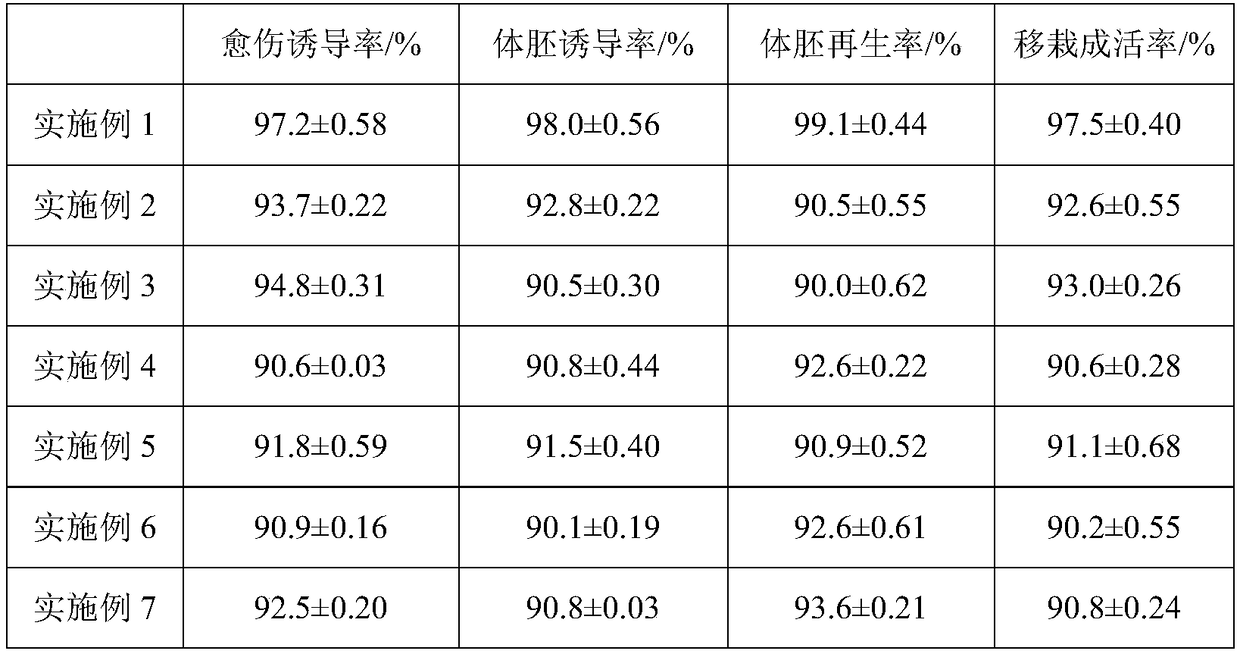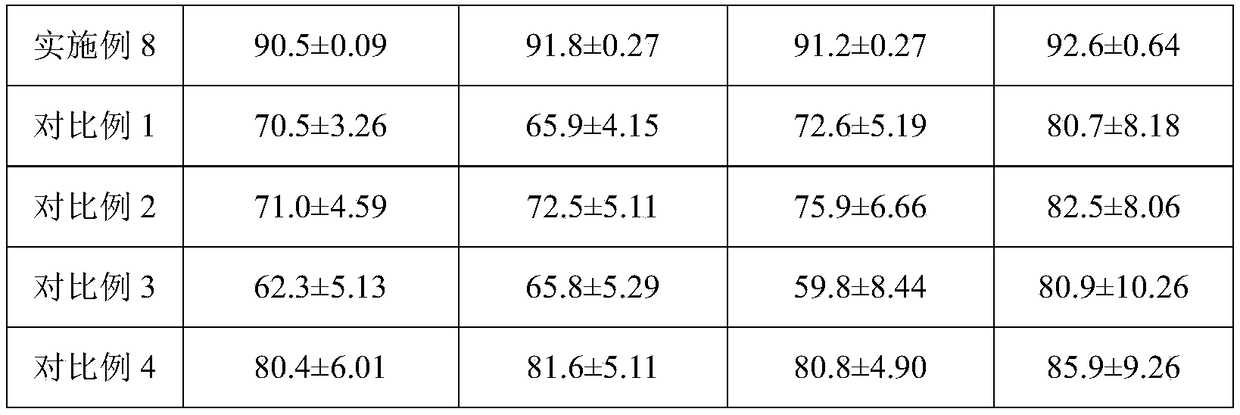Coconut immature inflorescence tissue culture method
A tissue culture and immature technology, applied in the field of coconut immature inflorescence tissue culture, can solve the problems of poor test repeatability, failure to achieve success, long time, etc., to improve the callus induction rate, shorten the tissue culture period, and stabilize the method Effect
- Summary
- Abstract
- Description
- Claims
- Application Information
AI Technical Summary
Problems solved by technology
Method used
Image
Examples
Embodiment 1
[0059] A kind of coconut immature inflorescence tissue culture method, comprises the following steps:
[0060] The immature inflorescence of Wenye No. 2 variety was taken as the explant; through the callus induction stage, callus propagation stage, somatic embryo induction stage, somatic embryo maturation stage, somatic embryo germination stage, regenerated plant strong root stage and grouping Cultivate at the stage of transplanting and cultivating seedlings;
[0061] 1.1 Callus induction stage:
[0062] The callus induction medium includes the following components: 250 μM 2,4-D, 5 μM BAP, 5 μM 2iP, 4 g / L phytogel, 3 g / L activated carbon and 30 g / L sucrose are added to the modified Y3 medium;
[0063] The pH value of the medium is 5.75, the culture condition is dark culture at 28°C, and the culture time is 1 month.
[0064] 1.2 Stage of callus propagation:
[0065] The callus propagation medium includes the following components: 250 μM 2,4-D, 5 μM BAP, 5 μM 2iP, 10 μМTDZ, 4...
Embodiment 2
[0081] A kind of coconut immature inflorescence tissue culture method, comprises the following steps:
[0082] The immature inflorescence of Wenye No. 2 variety was taken as the explant; through the callus induction stage, callus propagation stage, somatic embryo induction stage, somatic embryo maturation stage, somatic embryo germination stage, regenerated plant strong root stage and grouping Cultivate at the stage of transplanting and cultivating seedlings;
[0083] 1.1 Callus induction stage:
[0084] The callus induction medium includes the following components: 200 μM 2,4-D, 3 μM BAP, 3 μM 2iP, 2 g / L phytogel, 1 g / L activated carbon and 20 g / L sucrose are added to the modified Y3 medium;
[0085] The pH value of the medium is 5.75, the culture condition is dark culture at 27°C, and the culture time is 1 month.
[0086] 1.2 Stage of callus propagation:
[0087] The callus propagation medium includes the following components: 200 μM 2,4-D, 3 μM BAP, 3 μM 2iP, 5 μМTDZ, 2 ...
Embodiment 3
[0102] A kind of coconut immature inflorescence tissue culture method, comprises the following steps:
[0103] The immature inflorescence of Wenye No. 2 variety was taken as the explant; through the callus induction stage, callus propagation stage, somatic embryo induction stage, somatic embryo maturation stage, somatic embryo germination stage, regenerated plant strong root stage and grouping Cultivate at the stage of transplanting and cultivating seedlings;
[0104] 1.1 Callus induction stage
[0105] The callus induction medium includes the following components: 300 μM 2,4-D, 8 μM BAP, 8 μM 2iP, 8 g / L phytogel, 8 g / L activated carbon and 40 g / L sucrose are added to the modified Y3 medium;
[0106] The pH value of the medium is 5.80, the culture condition is dark culture at 29°C, and the culture time is 3 months.
[0107] 1.2 Callus propagation stage
[0108] The callus propagation medium includes the following components: 300 μM 2,4-D, 8 μM BAP, 8 μM 2iP, 20 μМTDZ, 8 g / L...
PUM
 Login to View More
Login to View More Abstract
Description
Claims
Application Information
 Login to View More
Login to View More - R&D
- Intellectual Property
- Life Sciences
- Materials
- Tech Scout
- Unparalleled Data Quality
- Higher Quality Content
- 60% Fewer Hallucinations
Browse by: Latest US Patents, China's latest patents, Technical Efficacy Thesaurus, Application Domain, Technology Topic, Popular Technical Reports.
© 2025 PatSnap. All rights reserved.Legal|Privacy policy|Modern Slavery Act Transparency Statement|Sitemap|About US| Contact US: help@patsnap.com


